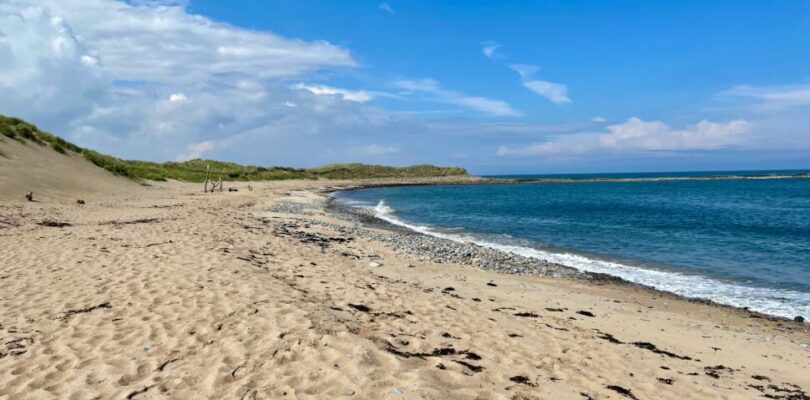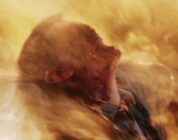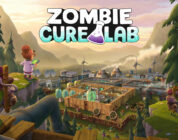If you’re a long-time fan of zombie movies, you’ve surely logged your fair share of hours in the “28 Days Later” film franchise. The original 2002 movie, which sparked a 2007 sequel “28 Weeks Later,” has now finally received its long-awaited third installment in “28 Years Later.” Much like the previous films, the new theatrical outing centers on a group of human survivors struggling to push back against a global zombie virus and the ensuing apocalypse. “28 Years Later” takes the action a step beyond the previous installments by showcasing a group of survivors who have hunkered down on a tiny island off England’s Northeastern coast in an effort to keep the virus out and the supplies in. Those interested in visiting this island themselves need not worry about any world-ending viruses, as the space is actually a well-known tourist attraction by the name of Holy Island.
The behind-the-scenes tales of “28 Years Later” are arguably just as interesting as the narrative itself, as the film was rumored to have been shot entirely on an iPhone rig. It’s also notable since the movie serves as a legacy sequel to two beloved genre classics, sparking waves of fans to buy tickets to their local cinemas. If you’re a super-fan, this might be the best time to give Holy Island a spin, as you’re liable to encounter a few other dead-heads along the way. We’ll outline a few key filming locations, as well as a few must-see tourist attractions in the area to give you the best itinerary humanly possible. Just be sure to double-check that nobody on your ferry is hiding any infected bite marks before you depart.
Was ’28 Years Later’ Really Filmed On An iPhone?
Though it may come as a shock to many film buffs, “28 Years Later” really was shot using iPhones instead of traditional 35 mm film cameras. Filmmaker Danny Boyle has built his career on a style of guerrilla filmmaking, opting to utilize non-traditional tools to aid his visual storytelling. The original “28 Days Later” was shot on a digital camcorder back in 2002, and Boyle considers the iPhone Pro 15 Max to be the nearest modern equivalent. Still, you shouldn’t be misled by claims that the film was simply shot using a phone like your standard TikTok. According to a report from The Verge, “28 Years Later” was captured using a mix of regular cameras, drone footage and massive iPhone rigs containing north of 10 to 20 devices. iPhone shots have also been meticulously planned, color graded and touched up in post-production, so there’s no need to feel envious if your student film or home movie doesn’t quite stack up.
While describing the process of capturing footage on iPhones, Danny Boyle stated, “There is an incredible shot in the second half [of the film] where we use the 20-rig camera, and you’ll know it when you see it. It’s quite graphic, but it’s a wonderful shot that uses that technique, and in a startling way that kind of kicks you into a new world rather than thinking you’ve seen it before.” If you do plan on visiting Holy Island to see a few “28 Years Later” filming locations, you’ll certainly have a chance to recreate some of the film’s most eye-catching moments with your own devices.
What Island Is In ’28 Years Later’?
Key Scenes: As stated, most of “28 Years Later” was filmed on location on Holy Island, also known as Lindisfarne, England. This coastal gem is home to a variety of tourist attractions, beautiful views and historic churches. The area has even been regarded as the center of early Celtic Christianity. Though the views are stunning, you’ll find that there isn’t much infrastructure on the island, with only a few bars and pubs to speak of, and only one single hotel known as the Lindisfarne Hotel. Obviously, this space lends itself nicely to a film like “28 Years Later,” which requires shooting in an area with little to no bystanders, nightlife or public activity. The film highlights much of what makes Lindisfarne beautiful by stripping back modern amenities and allowing the crashing waves surrounding the island to serve as a natural border to keep zombies at bay.
Best Time to Visit: Though mainland England is regarded as a popular tourist destination year-round, Holy Island is best explored during the shoulder seasons. Booking your trip in the months of April or September will allow you to enjoy the mildest weather, calm seas and quiet surroundings. Winters can be particularly brutal in the region, with harsh rains and choppy waves creating difficult conditions for navigating the small isle.
Transportation Options: Holy Island is accessible exclusively via a single causeway. This five mile stretch of road operates only during specific times of day, as it is known to become submerged by water during high tide, cutting the island off from the mainland entirely. Those looking to gain access can feel free to book a cab, take a bus or drive across themselves. You can even walk across the causeway if you arrive at the right time – just be advised that choppy weather can lead to immediate closures. Boat tours also provide access to the island, though there is no dedicated ferry. Needless to say, you’ll have to be quite meticulous with your itinerary if you plan an extended stay on the island.
As of this writing, there are no official production tours for “28 Years Later” available on Holy Island. Even still, fans should have no difficulty locating some of the key filming locations, since the area isn’t very large. If you’re an all-around movie fanatic, however, you’re always welcome to check out the Harry Potter production tour, which outlines how exactly the churches and historical sites of Lindisfarne were transformed into Hogwarts.
Even if you have no interest in film productions, you’ll find that Holy Island is a wonderful vacation destination for visitors of all stripes, offering castle views, gorgeous greenery and nature reserves. Ostensibly, this is the perfect place to hunker down and enjoy the view as a zombie virus rages across the mainland.
Things to Do: Though Holy Island might pack less excitement than your traditional vacation locale, there are still plenty of things to explore during your next visit. A few must-see attractions include the church ruins at Lindisfarne Priory, the area’s National Nature Reserve and the still-standing Lindisfarne Castle, which was initially constructed in the year 1550. If the weather isn’t holding up or you’re just looking to socialize with the locals, be sure to grab a pint at Lindisfarne Mead, or check out the crafts shop at the local Scriptorium. Some visitors regard the process of entering the island to be an adventure all its own, considering the causeway is partially submerged throughout large portions of the day.
Where to Eat: Those looking to remain within the borders of Holy Island will not find many culinary options during their stay. At this time, there are fewer than five restaurants on the entire isle. Still, The Crown and Anchor Restaurant, The Ship Inn and The Hatch on Holy Island are all excellent choices for those looking to grab a bite. Each offers an array of local flavors and beverages. A cursory web search of any of these restaurants will display a wide range of positive reviews from locals and tourists alike.
Where to Stay: As referenced above, the Lindisfarne Hotel is technically the only official hotel currently operating on Holy Island. Still, this business offers excellent views, great customer service and a relaxed, laid-back atmosphere perfect for those looking to escape for a few days, per online reviews. If you don’t mind booking a hotel on the mainland and only exploring the island as a day trip, you can always try out Fenham Farm Coastal Retreat, The Ship Inn or Budle Hall, which each offer views of the island from just across the water.
Frequently Asked Questions
How long did it take to film “28 Days Later”?
Principal photography for the original “28 Days Later” took place over the course of nine weeks in the late summer/early fall of 2001. Notably, some sequences were shot in London during the morning of Sept. 11, which may have impacted some of the editing and post-production choices in the movie. The 9/11 terrorist attacks had a major impact on the film scene at the time, leading to significant changes to numerous 2002 releases, including “Spider-Man,” “Men In Black 2” and “Lilo & Stitch.”
Is Cillian Murphy in “28 Years Later”?
Long-time fans of the franchise may have been shocked leaving the theater after catching “28 Years Later,” as Cillian Murphy’s Jim is nowhere to be found. Despite the “Oppenheimer” actor’s absence from the brand new film, director Danny Boyle has confirmed that Murphy will return to the franchise in the future, with the release of “28 Years Later: The Bone Temple.” Per an interview with Screen Rant, Boyle stated “I’ve obviously seen a rough cut of Nia DaCosta’s film of “The Bone Temple” and [Jim]’s introduced beautifully at the coda of that film… Cillian will be a huge part of the third movie, having been introduced in what is, in effect, a coda to the second movie. A very surprising one nonetheless.”





